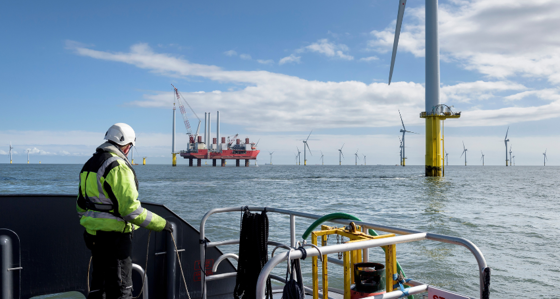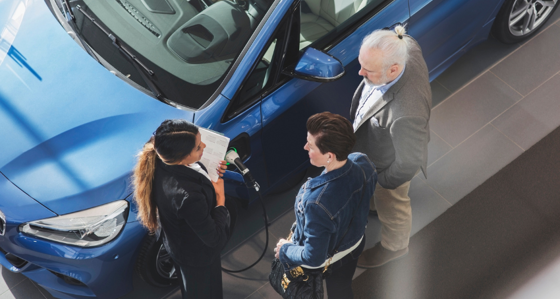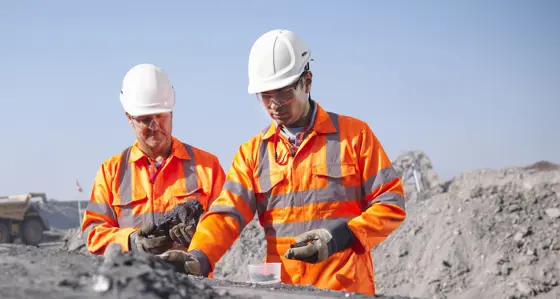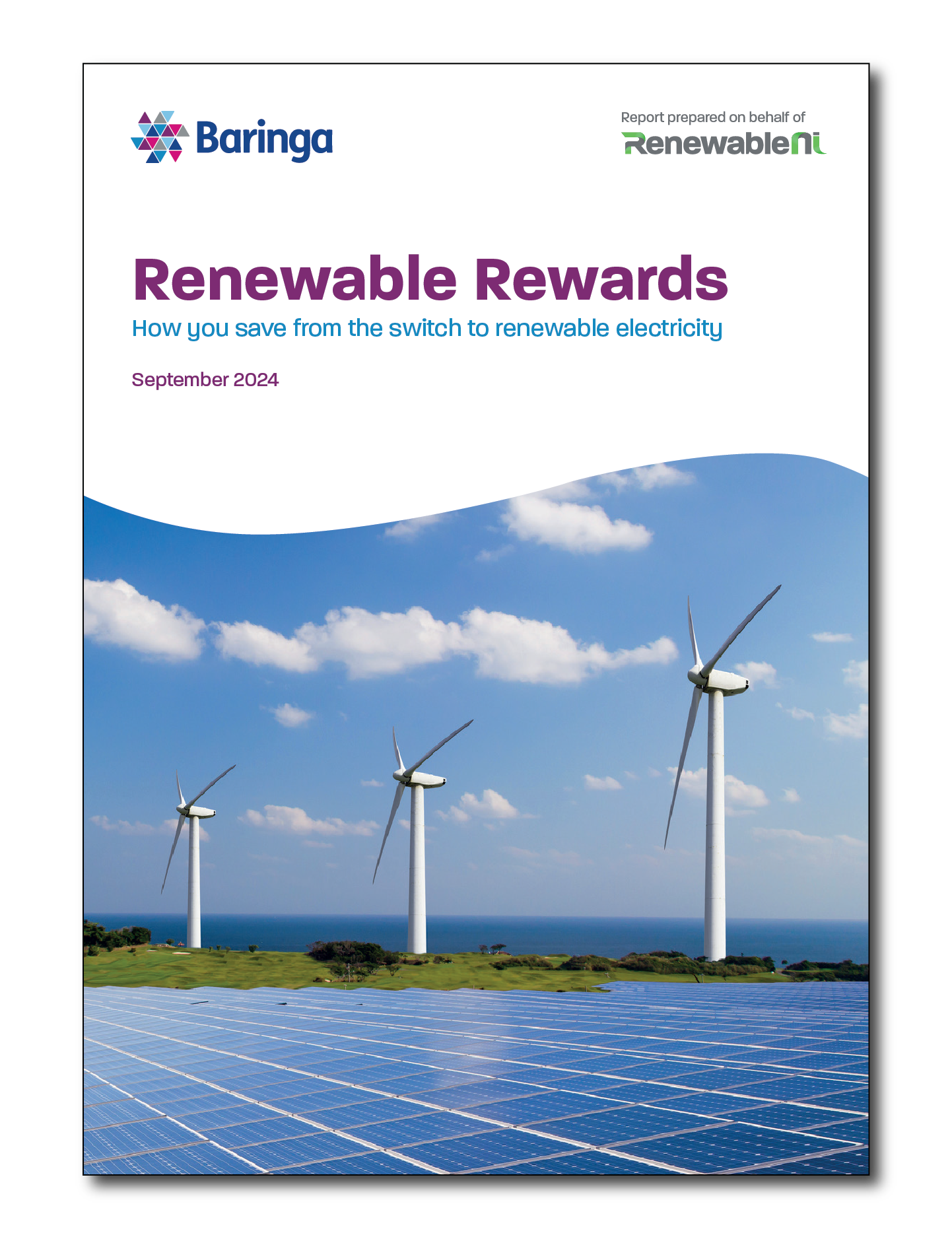
Renewable Rewards: How you save from the switch to renewable electricity
4 min read 10 September 2024
The development of renewables in Northern Ireland has reduced the cost burden on consumers by £200 million between 2000 and 2023. This saving of £100 per person, realised on the power bills of all consumers, has been driven by the low cost of renewable power generation.
Wind and solar farms have no fuel cost, allowing them to undercut more expensive gas- and coal-fired generators, and displace them from the wholesale power market.
This report, commissioned by RenewableNI, a renewable electricity organisation, found that if Northern Ireland continues to invest in wind and solar generation to achieve 80% renewable electricity, new renewables could pay additional dividends to consumers of £110 million in 2030.
Northern Ireland’s transition to renewables has prevented more than 13 million tonnes of CO2 from being emitted since 2000, equal to taking 315,000 cars off the road today, a quarter of the total vehicles in Northern Ireland.
Read the report for:
- The savings conferred to consumers by renewable energy in Northern Ireland since 2000.
- The potential additional savings that could be unlocked in 2030 if Northern Ireland continues to invest in renewables.
- The volume and cost of fossil fuels avoided by renewables.
- The carbon emissions avoided by renewables.
RenewableNI is renewable electricity organisation, whose members have a focus on building the future energy system, powered by clean electricity.
Read our previous report on this here: The wind dividend: how wind energy pays back to Northern Ireland
What does this mean for you?
What happens if Northern Ireland’s target of 80% renewable electricity by 2030 isn’t achieved on time?
Renewable Rewards shows the size of the prize – additional consumer savings of £110 million – if the government ambition is realised by 2030. This result has been calculated relative to a baseline scenario, in which no more renewables are commissioned from today’s levels.
Our findings therefore show the range of consumer savings available if the target is not achieved – if less renewable capacity is connected to the grid – a smaller saving will be realised on end consumer bills.
The £110 million net saving is an annual figure for the year 2030 alone, and similar savings would be conferred to consumers in subsequent years once renewable capacity is deployed. The more quickly renewables can be deployed, the greater the cumulative savings – for both consumer costs, and CO2 emissions.
Have consumers in other markets saved from the development of renewables?
The exact line items included in consumer power bills, and the way they are divided across consumers, varies from market to market. In geographies with competitive market arrangements, in which generators are dispatched according to their running costs, renewables will be able to lower the wholesale cost of electricity in the same way they have done so in Northern Ireland.
The overall impact on consumer bills will then depend on the size of this saving relative to the costs incurred to support renewable projects, integrate them onto the grid, and balance the system.
In the Republic of Ireland, both of the savings (wholesale and capacity market) and two of the costs (dispatch balancing and system services) are paid by consumers through the same tariffs we have calculated for Northern Ireland. The two remaining costs (renewable support and network) will have varied across the two jurisdictions.
For more information, reach out to Mark Turner and Alec Granville-Willett.
Related Insights

Trump trade tariffs: Impact on the UK EV uptake
The global automotive industry is at a critical juncture, shaped by intersecting forces of electrification, geopolitical trade tensions, and national decarbonisation policy.
Read more
Driving economic growth by securing a cleaner and resilient future for the North Sea
Our report, published in conjunction with Offshore Energies UK (OEUK), outlines how the North Sea can continue to play a pivotal role in the energy system as the world shifts to net zero, while positioning the UK as a resilient, innovative and competitive player in the global energy landscape.
Read more
From early adopters to early majority: Driving the next phase of EV growth
As EVs are moving beyond the early adopter phase, what are the principles needed for mass market adoption and progressing towards net zero targets?
Read more
Crossing the industry divide to drive decarbonisation across Asia-Pacific
Resources organisations are identifying opportunities in the unfamiliar overlap between energy, mining and metals.
Read moreIs digital and AI delivering what your business needs?
Digital and AI can solve your toughest challenges and elevate your business performance. But success isn’t always straightforward. Where can you unlock opportunity? And what does it take to set the foundation for lasting success?
